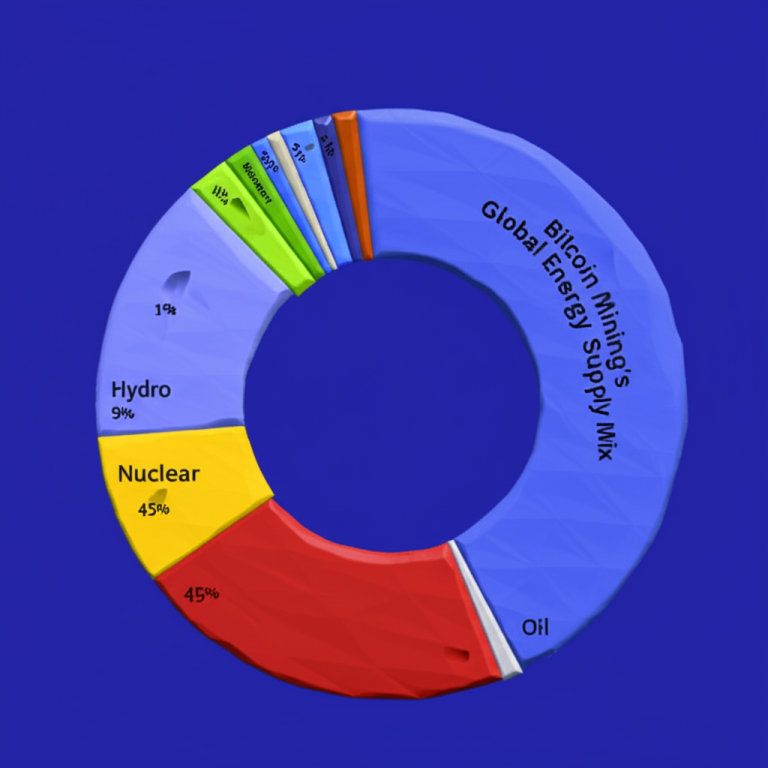“`markdown
The Hidden Costs of Bitcoin Mining: A Silent Threat to Public Health
Bitcoin mining has long been celebrated for its financial potential, but beneath the surface lies an alarming reality: its environmental and health impacts are far more devastating than many realize. Recent studies estimate that 1.9 million Americans are exposed to harmful air pollution directly linked to Bitcoin mining operations. This revelation forces us to confront the darker side of cryptocurrency—one that extends beyond digital wallets and into the air we breathe.
—
The Energy Hunger of Bitcoin Mining
A Global Power Drain
Bitcoin mining consumes more electricity than entire countries like the Netherlands or Argentina. The process relies on solving complex cryptographic puzzles, requiring vast computational power—and thus, staggering energy demands.
– Fossil Fuel Dependence: Despite claims of “green mining,” 75% of Bitcoin’s energy mix still comes from coal and natural gas.
– Carbon Footprint: A single Bitcoin transaction emits over 1,000 kg of CO₂—equivalent to driving a gasoline-powered car for 2,500 miles.
The Renewable Energy Myth
While some mining operations use hydroelectric or wind power, these cases are exceptions. The industry’s growth outpaces renewable adoption, locking in long-term reliance on polluting energy sources.
—
Air Pollution: An Invisible Health Crisis
PM2.5 and Public Health
Bitcoin mining releases fine particulate matter (PM2.5), which penetrates lungs and bloodstreams, causing:
– Respiratory diseases (asthma, lung cancer)
– Cardiovascular damage
– Premature deaths (linked to 19,000 annual cases in the U.S.)
Cross-Border Contamination
Pollution doesn’t respect state lines:
– A coal-powered mining facility in Kentucky can degrade air quality in Illinois.
– Texas, a hub for mining, now faces grid instability and higher emissions due to uncontrolled energy demand.
—
Economic Gains vs. Environmental Ruin
The False Promise of Profit
For every $1 in Bitcoin value created, $1.50 in health and climate damages is inflicted. In some regions, the harm outweighs economic benefits:
– Inner Mongolia’s mining ban: China’s crackdown followed findings that pollution costs exceeded local GDP growth from mining.
– Iceland’s dilemma: Renewable energy diverted to mining leaves households vulnerable to shortages.
Who Pays the Price?
– Taxpayers fund healthcare for mining-related illnesses.
– Future generations inherit a destabilized climate.
—
The Path Forward: Regulation or Obsolescence?
Immediate Solutions
A Fork in the Road
The Bitcoin community faces a choice:
– Embrace sustainability through proof-of-stake (like Ethereum) or carbon offsets.
– Risk irrelevance as governments impose bans (e.g., New York’s 2023 moratorium).
—
Conclusion: Beyond the Blockchain
Bitcoin’s legacy shouldn’t be measured in satoshis, but in the lives impacted by its operations. The technology is revolutionary, but its current form is untenable. Without urgent reform, the very system designed to decentralize finance may centralize suffering—trading breathable air for digital gold. The clock is ticking: innovate or perish.
“`
資料來源:
[2] news.unm.edu
[3] hsph.harvard.edu
[4] www.theblock.co
[5] bioengineer.org
Powered By YOHO AI





